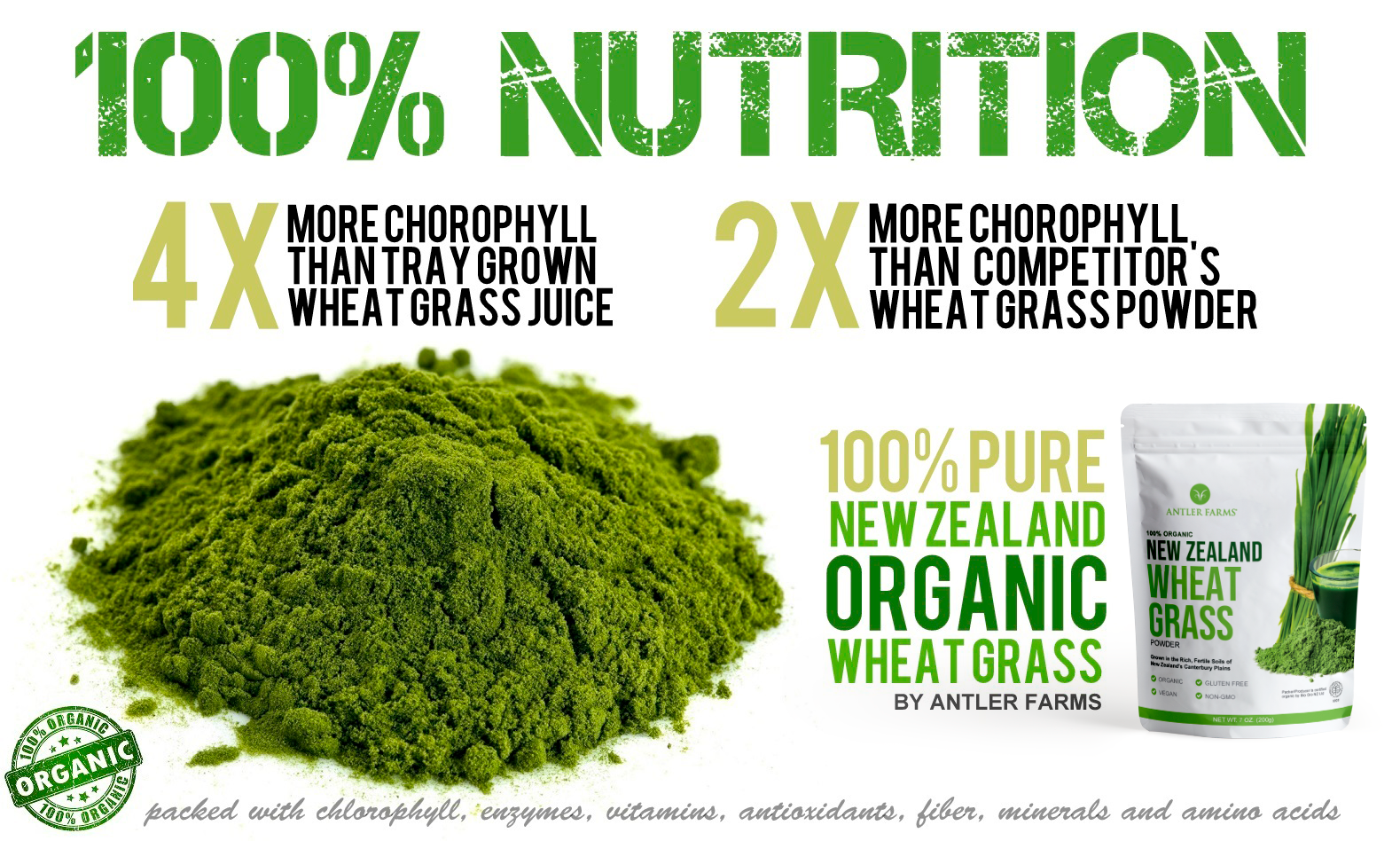New Zealand wheat grass is grown as nature intended – in ideal conditions under sunlight, rain water and variable weather. Many consumers of the tray grown wheat grass juice do not realize that it is made from wheat grass that has not reached its full nutritional potential.
Tray grown wheat grass is grown under artificial conditions – usually in a warm greenhouse or indoors under fluorescent lightning. The grass is harvested and juiced only 7-10 days after sprouting, compared to up to 200 days for outdoor grown New Zealand organic wheat grass. Therefore tray grown wheat grass does not have time to develop a significant root system. Instead the accelerated growth causes the plant to put most of its energy into growing leaves.

Tray grown wheat grass is nutritionally inferior to outdoor grown New Zealand wheat grass.
Tray grown wheat grass has a relatively high level of simple sugars compared to outdoor wheat grass. Because tray grown wheat grass develops quickly, it does not have the time to convert these sugars into complex carbohydrates, vitamins, enzymes and proteins. Furthermore, tray grown wheat grass is often grown with little to no soil. Very few nutrients are absorbed through the roots.
Finally, tray grown wheat grass juice is 95% water and only 5% nutrition, whereas Antler Farms® New Zealand Organic Wheat Grass powder is 100% nutrition. 
The chlorophyll content from our organic wheat grass powder is 4 times higher per serving than tray grown wheat grass juice.
Our wheat grass has 36 mg of chlorophyll per serving (4 g) while tray-grown wheat grass juice that has just 8 mg per serving. The protein in our organic wheat grass is twice that of tray grown wheat grass juice. Our wheat grass has 1.2 g of protein per serving (4 g) while tray grown wheat grass has just 550 mg per serving.

